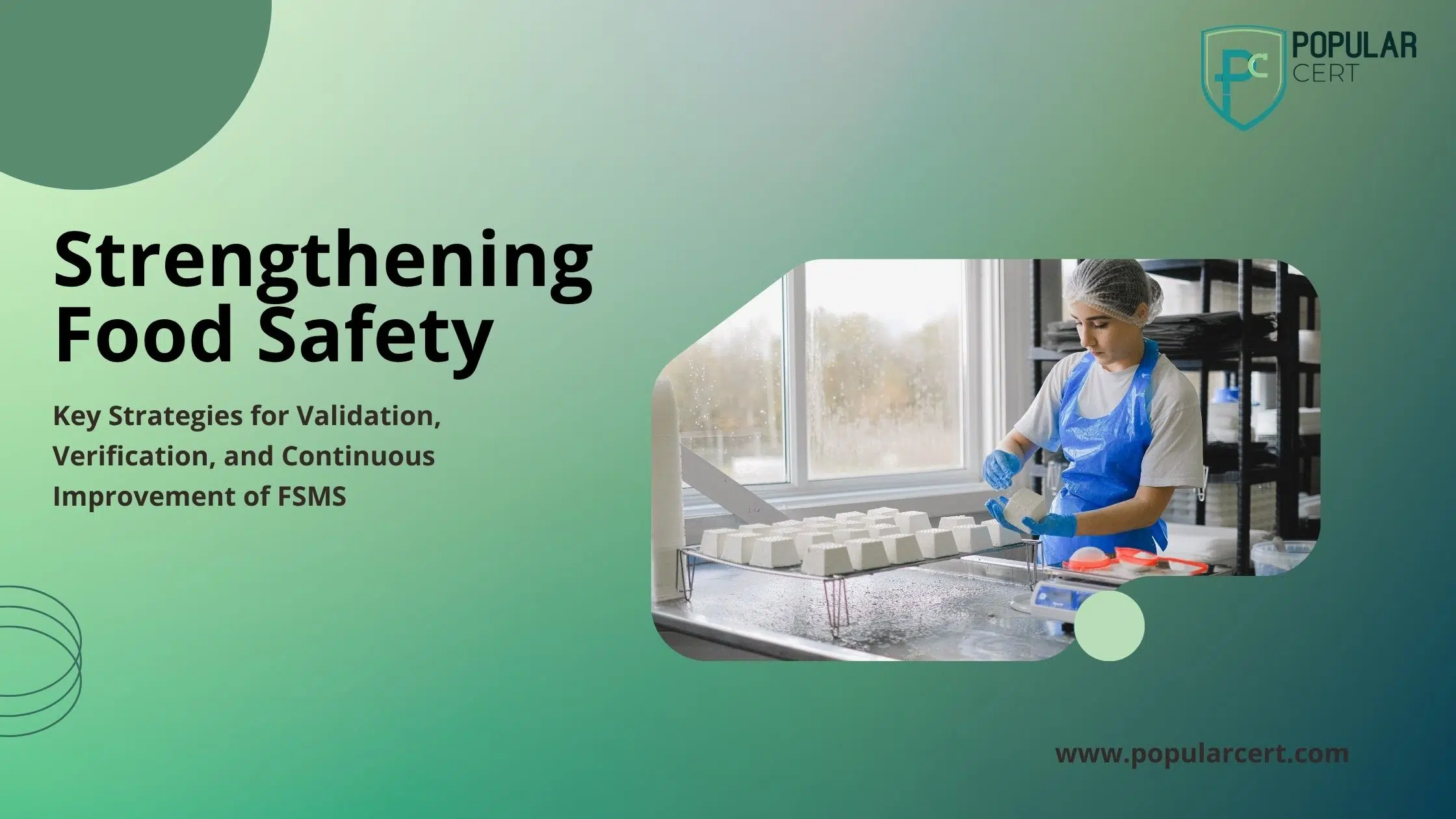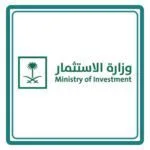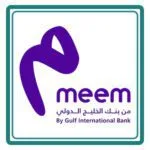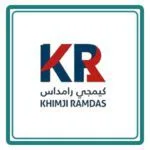Strengthening Food Safety: Key Strategies for Validation, Verification, and Continuous Improvement of FSMS

Ensuring food safety isn’t a one-time task—it requires a dynamic and proactive approach. A well-established Food Safety Management System (FSMS) must undergo ongoing validation, verification, and improvement to effectively manage hazards and comply with ISO standards like ISO 22000. By regularly assessing control measures and refining system performance, organizations can not only meet regulatory expectations but also protect consumer health and strengthen food safety across the supply chain. This blog outlines key strategies for maintaining a resilient FSMS through structured validation, verification, and continual improvement.
1. Validation, Verification and Improvement of the Food Safety Management System
1.1 General
The food safety team shall plan and implement the processes needed to validate control measures and/or control measure combinations, and to verify and improve the food safety management system (FSMS) in accordance with applicable ISO standards.
1.2 Validation of Control Measure Combinations
Prior to implementation of control measures to be included in operational PRP(s) and the HACCP plan, and after any change therein, the organization shall validate that:
- The selected control measures are capable of achieving the intended control of the food safety hazard(s) for which they are designated.
- The control measures are effective and capable of, in combination, ensuring control of the identified food safety hazard(s) to obtain end products that meet the defined acceptable levels.
If the result of the validation shows that one or both of the above elements cannot be confirmed, the control measure and/or combinations thereof shall be modified and re-assessed. Modifications may include changes in control measures (i.e., process parameters, rigorousness and/or their combination) and/or change(s) in the raw materials, manufacturing technologies, end product characteristics, methods of distribution and/or intended use of the end product. This aligns with the requirements of ISO 22000 for validating food safety processes.
1.3 Control of Monitoring and Measuring
The organization shall provide evidence that the specified monitoring and measuring methods and equipment are adequate to ensure the performance of the monitoring and measuring procedures.
Where necessary to ensure valid results, the measuring equipment and methods used:
- Shall be calibrated or verified at specified intervals, or prior to use, against measurement standards traceable to international or national measurement standards, where no such standards exist, the basis used for calibration or verification shall be recorded.
- Shall be adjusted or re-adjusted as necessary.
- Shall be identified to enable the calibration status to be determined.
- Shall be safeguarded from adjustments that would invalidate the measurement results.
- Shall be protected from damage and deterioration.
Records of the results of calibration and verification shall be maintained as required by ISO-based food safety systems.
In addition, the organization shall assess the validity of the previous measurement results when the equipment or process is found not to conform to requirements. If the measuring equipment is nonconforming, the organization shall take action appropriate for the equipment and any product affected. Records of such assessment and resulting actions shall be maintained.
When used in the monitoring and measurement of specified requirements, the ability of computer software to satisfy the intended application shall be confirmed. This shall be undertaken prior to initial use and shall be reconfirmed as necessary.
1.4 Food Safety Management System Verification
1.4.1 Internal Audit
The organization shall conduct internal audits at planned intervals to determine whether the FSMS:
- Conforms to the planned arrangements, to the food safety management system requirements established by the organization, and to the requirements of this International Standard (e.g., ISO 22000).
- Is effectively implemented and updated.
An audit programme shall be planned, taking into consideration the importance of the processes and areas to be audited, as well as any updating actions resulting from previous audits. The audit criteria, scope, frequency, and methods shall be defined. Selection of auditors and the conduct of audits shall ensure the objectivity and impartiality of the audit process. Auditors shall not audit their own work.
The responsibilities and requirements for planning and conducting audits, and for reporting results and maintaining records, shall be defined in a documented procedure. The management responsible for the area being audited shall ensure that actions are taken without undue delay to eliminate detected nonconformities and their causes. Follow-up activities shall include the verification of the actions taken and the reporting of the verification results.
1.4.2 Evaluation of Individual Verification Results
The food safety team shall systematically evaluate the individual results of planned verification. If verification does not demonstrate conformity with the planned arrangements, the organization shall take action to achieve the required conformity. Such action shall include, but is not limited to, review of:
- Existing procedures and communication channels.
- The conclusions of the hazard analysis, the established operational PRP(s) and the HACCP plan.
- The PRP(s).
- The effectiveness of human resource management and of training activities.
1.4.3 Analysis of Results of Verification Activities
The food safety team shall analyze the results of verification activities, including the results of internal audits and external audits. The analysis shall be carried out in order:
- To confirm that the overall performance of the system meets the planned arrangements and the food safety management system requirements established by the organization.
- To identify the need for updating or improving the FSMS.
- To identify trends which indicate a higher incidence of potentially unsafe products.
- To establish information for planning of the internal audit programme concerning the status and importance of areas to be audited.
- To provide evidence that any corrections and corrective actions that have been taken are effective.
The results of the analysis and the resulting activities shall be recorded and shall be reported, in an appropriate manner, to top management as input to the management review. It shall also be used as an input for updating the FSMS.
1.5 Improvement
1.5.1 Continual Improvement
Management shall ensure that the organization continually improves the effectiveness of the FSMS through the use of communication, management review, internal audit, evaluation of individual verification results, analysis of results of verification activities, validation of control measure combinations, corrective actions and FSMS updating.
NOTE: ISO 9001 addresses continual improvement of the effectiveness of quality management systems. ISO 9001 provides guidance on continual improvement of the effectiveness and efficiency of quality management systems beyond what is addressed in ISO 22000.
1.5.2 Updating the Food Safety Management System
Top management shall ensure that the FSMS is continually updated. In order to achieve this, the food safety team shall evaluate the FSMS at planned intervals. The team shall then consider whether it is necessary to review the hazard analysis, the established operational PRP(s) and the HACCP plan.
The evaluation and updating activities shall be based on:
- Input from communication, external as well as internal.
- Input from other information concerning the suitability, adequacy and effectiveness of the food safety system.
- Output from the analysis of results of verification activities.
- Output from management review.
System updating activities shall be recorded and reported, in an appropriate manner, as input to the management review.
Types Of Certification
- ISO Certification
- ISO 9001 Certification
- ISO 14001 Certification
- ISO 45001 Certification
- ISO 22000 Certification
- ISO 27001 Certification
- ISO 17025 Certification
- ISO 13485 Certification
- ISO 20000-1 Certification
- ISO 22301 Certification
- ISO 50001 Certification
- ISO 37001 Certification
- IATF 16949 Certification
- ISO 29001 Certification
- ISO 31000 Certification
- ISO 20121 Certification
- ISO 10002 Certification
- ISO 41001 Certification
Get Free Consultation
Our Clients


















Conclusion
A robust Food Safety Management System (FSMS) relies on continuous validation, verification, and improvement to ensure food safety hazards are effectively controlled. By systematically assessing control measures, monitoring and measuring processes, conducting internal audits, and analyzing verification results, organizations can maintain compliance with ISO 22000 and other relevant international food safety standards. Commitment to continual improvement ensures that the FSMS remains effective, adaptable, and aligned with evolving food safety requirements.
Call To Action
Is your organization equipped with a strong FSMS? Ensure compliance with international food safety standards and protect consumer health by implementing effective validation, verification, and improvement strategies. Contact PopularCert today for expert guidance on ISO 22000 certification and strengthen your food safety practices!
GET A FREE CONSULTATION NOW
FAQ
Why is validation of control measures important in a Food Safety Management System (FSMS)?
Validation ensures that selected control measures are capable of effectively controlling identified food safety hazards. It confirms that processes, such as HACCP and operational PRPs, achieve the intended food safety outcomes before implementation.
What is the difference between verification and validation in FSMS?
Validation is conducted before implementing control measures to confirm their effectiveness, while verification is an ongoing process to ensure that the FSMS is being followed correctly and remains effective over time.
How often should an organization conduct internal audits for FSMS?
Internal audits should be conducted at planned intervals, depending on the organization’s size, risk level, and regulatory requirements. Regular audits help identify nonconformities, ensure compliance, and drive continuous improvement.
